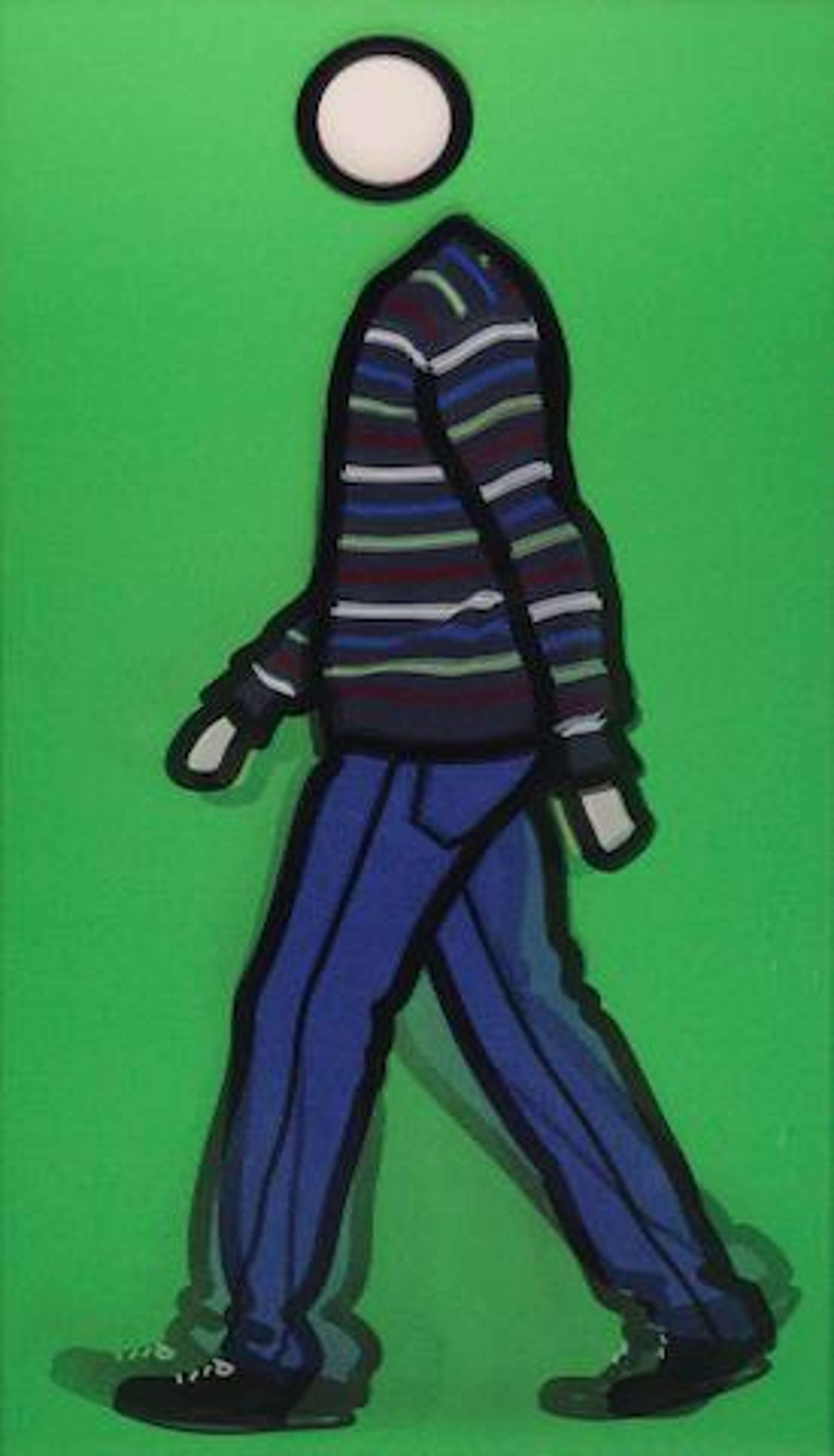
Jeremy Walking in Stripy Jumper

Jeremy Walking in Stripy Jumper
Signed Print
Julian Opie
Price data unavailable
There aren't enough data points on this work for a comprehensive result. Please speak to a specialist by making an enquiry.
83 x 47cm, Edition of 35, Lenticular
Auction Results

Track auction value trend
Meaning & Analysis
Jeremy Walking In Stripy Jumper is a signed lenticular print produced by the critically acclaimed British artist Julian Opie in 2010. Coming in an edition size of 35 the print shows a man from side-on captured walking across the composition. The man is rendered wearing blue jeans and a blue and green stripy jumper. His body is delineated using thick black lines which makes the figure stand out against the vibrant green backdrop. Opie is able to create the illusion of movement in this print by duplicating the lower portion of the figure’s legs, blurring them, as if the man were walking rapidly.
The figure in Jeremy Walking In Stripy Jumper is reduced to a simplified form, void of any distinguishable characteristics, and the man’s face is replaced by a circle, lacking any facial features. This print is exemplary of Opie’s unique visual language which is characterised by his use of simplified forms rendered using thick black lines filled with bold blocks of colour.
Opie has produced many prints of figures in motion notably in his Walking In London collection and Walking In The Rain collection. The artist was very interested in capturing the mundane reality of modern life and often chose to depict quotidian scenes of people walking through the streets, going to work and smoking.